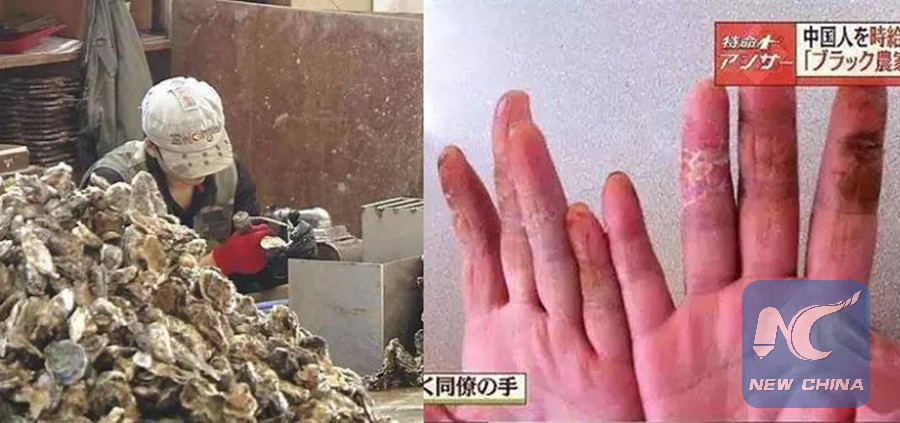
(Source: Xinhua)
BEIJING, Feb. 23 (Xinhua) -- For decades, the Japanese government has been recruiting foreigners to work in the country under a Technical Intern Training Program, which has been long criticized by rights groups at home and abroad as akin to slavery. The following is the figures and facts that can help you better understand this controversial program.
1. What is Technical Intern Training Program?
Japan first introduced the program in 1993. According to the Japan International Training Cooperation Organization(JITCO), which is charged with supervising host organizations and businesses, the program allows technical intern trainees to acquire and master the skills of the Japanese industries and professions under the employment relationship for a maximum period of 3 years. It currently covers 74 job categories mainly in construction, manufacturing, agriculture and fishery industries.The government recently added nursing care on the list to deal with the growing demand for such services as a result of the country's increasingly aging population.
2. What's the purpose of the program?
Officially, the Japanese government claims that the program was designed to bring in interns from developing countries and help them acquire technical skills they can bring back to their homelands to contribute to local economic development. According to th JITCO, "The purpose of this program is to transfer Skills to Technical Intern Trainees who will form a basis of economic development in their respective countries and play an important role in Japan's international cooperation and contribution."
However, such promise has been dismissed as deceptive. In an island nation with its workforce rapidly aging, many Japanese companies have turned to the intern system for cheap foreign labor. Most trainees are doing the low-paying 3K (dangerous, dirty and difficult in the Japanese language) jobs, most of which the Japanese themselves would not want to do. Though interns are promised to be protected by Japan's labor laws and minimum wages, the Japanese employers have exploited such foreigners since they are not familiar with the legal rules, not to mention helplessness when it comes to availing themselves of the legal system in Japan to defend their rights.
Last June, Japan's Labor Ministry inspected 5,173 workplaces across the country. Of those, 3,695 were found to be in breach of foreign labor standards, according to the Nikkei Asian Review.
3. How many foreigner trainees are there in Japan?
According to media reports, as of last June, there are altogether 210,000 foreigners working in firms and farms across Japan as what Tokyo calls trainees, mainly from Asian countries. The Japanese Ministry of Justice said recently that among these foreign workers, some 85,000 are Chinese. According to Japan's Ministry of Health, Labour and Welfare, some 35,000 workplaces hosted interns as of the end of 2015.
4. How are they recruited?
Japanese businesses have to hire such foreign workers through either private or official middlemen. The trainees, before landing in Japan, have already paid large sums of money in broker fees, leaving many of them in debt. Also, as their visas usually tie them to a particular company, they cannot change jobs even when they feel bad about their bosses.
5. How many of them have died & disappeared in Japan?
According to the JITCO, 304 foreign trainees have died since the program started, 29 by suicide. In addition, 87 of the deaths among these young people were blamed on "brain and heart illnesses." Meanwhile, local news outlet The Japan Times said in a report in October last year that a record 5,803 foreign trainees went missing in 2015 while working in Japan, adding that among them 3,116 were Chinese, followed by 1,705 from Vietnam, 336 from Myanmar, 250 from Indonesia and 102 from Nepal.

